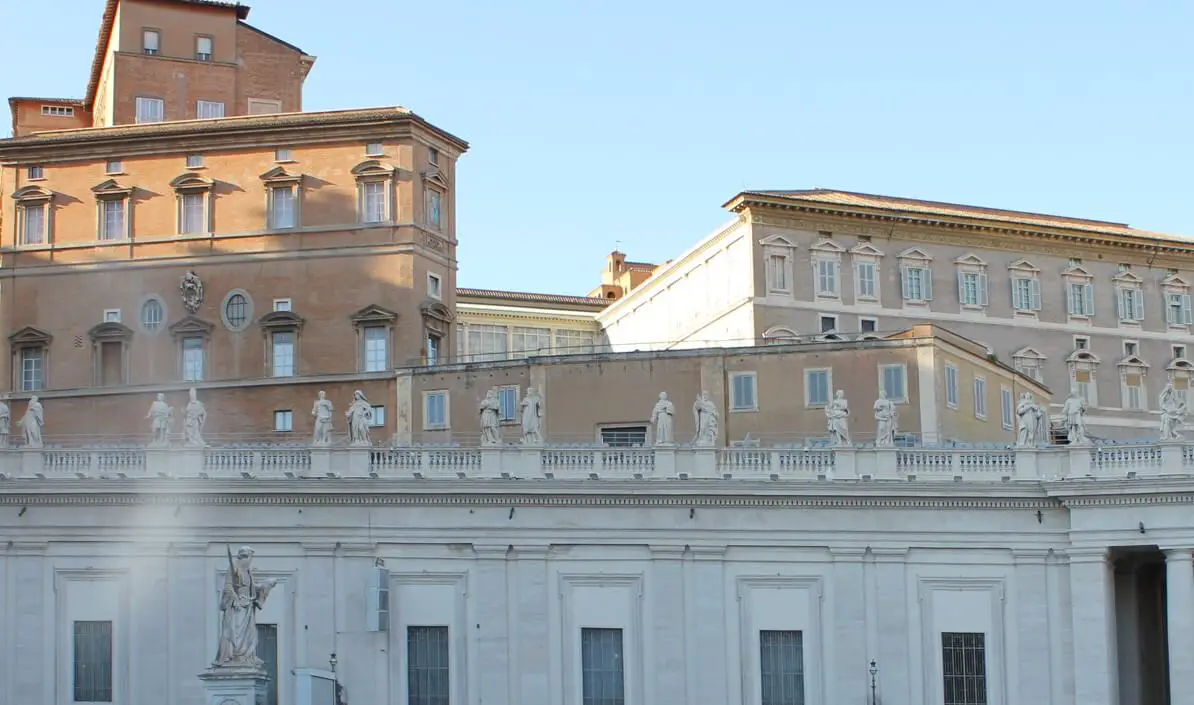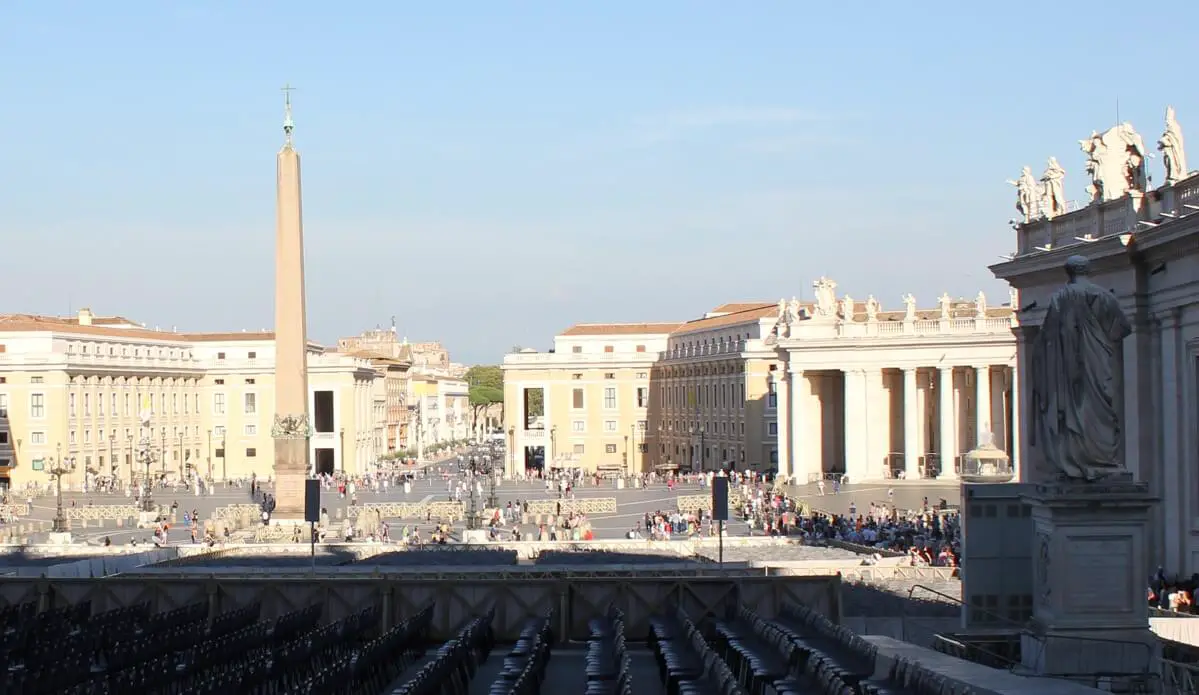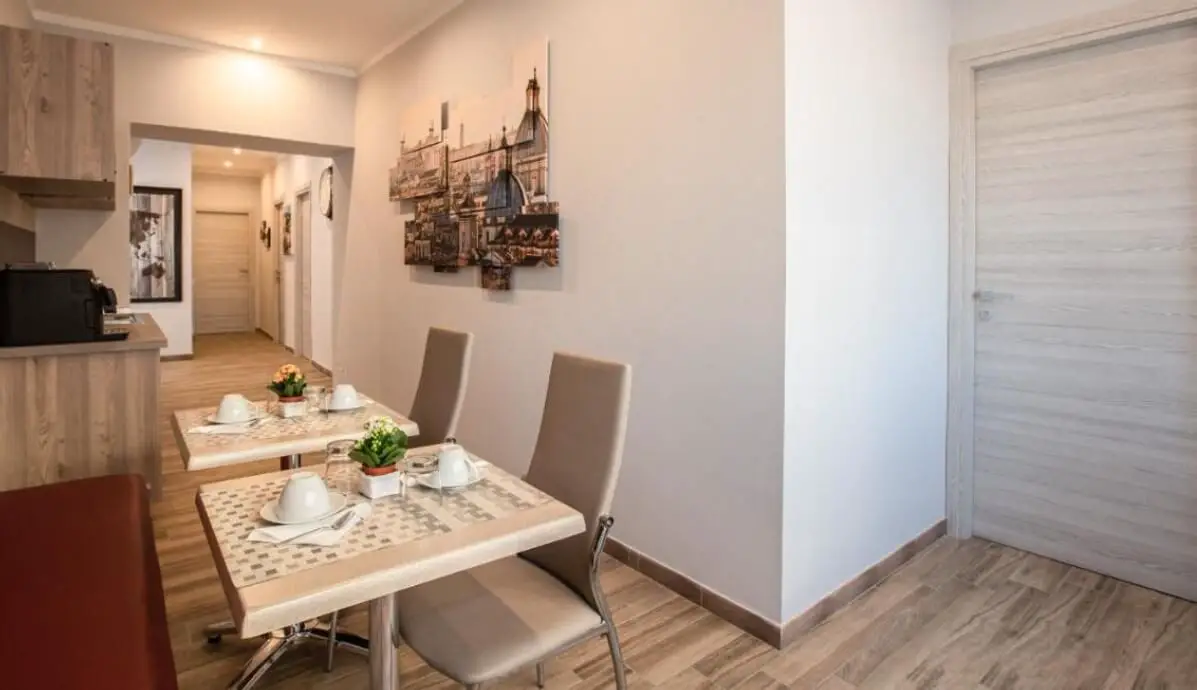
Apostolic Palace Vatican City: Where Does the Pope Live?
The Vatican City Apostolic Palace is the official residence of the Pope. Situated near to the Nicholas V Bastion, the residence is known by many names. You may hear of it referred to as the Palace of the Vatican, the Papal Home, the Papal Palace or even the Palace of Sixtus V to name but a few.
As the formal papal home, many parts of it are closed off to the public. You will have to bypass the Swiss Guard to get in, or climb up the Pope’s balcony. However, there are some parts of this papal palace that you can visit during your trip to the Vatican. Let’s explore together just what it is all about.
Contents
- 1 The Importance of the Vatican Apostolic Palace
- 2 The Architecture of the Papal Palace
- 3 Apostolic Palace in the Vatican Throughout History
- 4 Apostolic Palace Inside Look
- 5 3 Surprising Facts about Pope Palace
- 6 What Tourists Usually Do When Visiting the Vatican Complex?
- 7 What Paintings Are in the Apostolic Palace?
- 8 Can You Visit the Apostolic Palace? – How to Get Tickets
- 9 Best Time to Visit Vatican Palace – Opening Hours
- 10 Where is the Apostolic Palace Located?
- 11 3 Best Places to Sleep Near Papal Home
- 12 Frequently Asked Questions about the Vatican Palace
- 13 Conclusion
The Importance of the Vatican Apostolic Palace
Since the Apostolic palace in the Vatican represents not only the Pope’s formal home. It is also the location of some official Vatican and state offices. As a result, it can be compared to government administration buildings in some countries in terms of importance.
But perhaps the most well known and most important part of the pope’s home is the more tourist facing component. That’s because the Apostolic Palace is also home to the Vatican Museums, the world famous Sistine Chapel and the Vatican Library.
The Architecture of the Papal Palace
The Papal Palace building is officially referred to as the Palace of Sixtus V by the Vatican state. This is because it was him that commissioned the current building we can see today. Let’s check out the key features of the papal home, often referred to as the Palace of the Vatican.
Sistine Chapel
Decked out in 15th century frescoes and paintings, this sensory overload largely credited to Michelangelo is well worth the visit. It is the highlight of many a Vatican City tour. Don’t spend all your time looking up though – check out the brilliant floor whilst you are there too.
The Clementine Hall
Known in Italian as the Sala Clementina, this reception hall is also covered in beautiful frescoes. Most famously, this is where the body of the pope lies for viewing after he passes away. You may remember for example Pope John Paul II lying in state here.
The Borgia Apartments
The Borgia Apartments were previously used as a papal residence in the time of Pope Alexander VI (himself a member of the Borgia family) but have not been used as a residence since the early 16th century.
Tips – They now house a wide and valuable collection of art and frescoes spread across several rooms. The Borgia Apartments house what is thought to be one of Europe’s earliest paintings of Native American Indians.
The Raphael Rooms
One of the public areas within the Apostolic Palace, Vatican City is known as the Raphael Rooms. Commissioned originally as a personal suite of rooms for Pope Julius II, it is the stunning frescoes that make this a must see when visiting the Vatican. This is one part of the papal home that you can see – access is included in your entrance ticket for the Vatican Museum.
Apostolic Palace in the Vatican Throughout History

Construction on the current palace started at the end of the 16th Century as commissioned by Pope Sixtus V. Consisting of private apartments, government offices and the Vatican Museums, the Popes began to move from the Lateran Palace into the area in the 14th century.
However, there was alternative accommodation on the site of the Apostolic Palace from as early as the 5th century. The Palace of Sixtus V is now the formal home of the Pope, although he typically spends some of the summer in the Castel Gandolfo.
Apostolic Palace Inside Look
Imagine frescoes and artwork that dates back centuries. Then, some boring government offices. That’s pretty much the deal with the Apostolic Palace. Get a sense of what they are like by visiting the parts that are open to the public – this includes the Vatican Museums, Raphael Rooms and Sistine Chapel.
3 Surprising Facts about Pope Palace
- The world’s biggest library is here: The Library in the Vatican City contains well over a million texts and books.
- The Apostolic Palace is protected by the Swiss Guard: Actual Swiss servicemen protect the Palace – if you are lucky you’ll get a picture with them.
- The Apostolic Palace is pretty big: The papal home contains more than 1400 rooms!
What Tourists Usually Do When Visiting the Vatican Complex?
A typical day at the Apostolic Palace will contain a visit to the Vatican Museums including the Raphael Rooms and the Sistine Chapel. Most either start or end their visit with a look inside St Peter’s Basilica.
What Paintings Are in the Apostolic Palace?
The Sistine Chapel paintings are perhaps the most famous works of art in the Apostolic Palace interior. Elsewhere, in the Raphael Rooms you can find The Vision of The Cross (in the Hall of Constantine) and The Fire in the Borgo.
The Crucifixion of St Peter can be found in the Pinacoteca room. The list of famous artworks that adorn the Apostolic Palace interior are almost too many to mention – the Pinacoteca alone has 16 rooms full of art!
Can You Visit the Apostolic Palace? – How to Get Tickets

The parts of the Apostolic Palace that are open to the public – mainly the Vatican museums and its attractions – can be visited on just one ticket.
We would recommend you book a skip the line ticket in advance, especially if travelling in peak season. That way you won’t need to line up to get your ticket on the day. For a full guide on how to get tickets online check out our detailed instructions in this handy article.
Best Time to Visit Vatican Palace – Opening Hours
| Opening Hours | Days |
|---|---|
| 8.30am and 4.30pm | Monday - Saturday |
| Closed | Sunday |
In our second guide on how to visit the Vatican we give a few top tips on the best times to visit the Vatican City. You can find this information, and much more here.
But generally speaking you can visit the attractions of the Papal Palace between 8.30am and 4.30pm – note that the Vatican is closed on Sundays.
Where is the Apostolic Palace Located?
The Apostolic Palace is found within the Vatican City walls. Take line A of the Metro to Ottaviano-S. Pietro. From there it is a short walk to this famous attraction.
3 Best Places to Sleep Near Papal Home

Unfortunately you can’t sleep in the Pope’s house! Luckily for you however the area is jam packed with hotels and other accommodation. Here is a tiny example of just what is available.
The Vatican City Relais
With rooms starting at around €90, this popular chain hotel offers great value for money and excellent facilities. Breakfast costs just an extra €5, and the main advantage of this hotel is the private balcony on each room! You are just under 2 kilometres from the Apostolic Palace.
Tmark Hotel Vaticano
Just half a kilometre from the Vatican City walls, the Tmark Hotel Vaticano offers Art Nouveau suites, many of which have a direct view to the walls. Breakfast is a sumptuous affair, and rooms start at €158.
San Pietro Leisure and Luxury
At 0.8km from the Vatican, this hotel is a great choice for those looking for a balcony room with air conditioning close to the Vatican. Rooms start at just €88.
Frequently Asked Questions about the Vatican Palace

How far is the Apostolic Palace from St Peter's square?
It’s about a 5 minute walk between the 2 attractions.
When was the Apostolic Palace built?
The current structure of the Vatican Palace was built in the late 16th century.
Why was the Apostolic Palace built?
The Vatican Palace was built for private accommodation and to house the Vatican collections.
Where is the Pope located?
The Pope’s official residence is the Palace of the Vatican within the Vatican City.
Conclusion
Now that you know the story of the Apostolic Palace, why not get to planning your trip, including skip the line tickets and Rome City passes.
Fanny, a devoted art enthusiast and world traveler, has been exploring Vatican City’s treasures since 2012. As the founder and chief editor of the Visit Vatican blog, she’s dedicated to sharing the finest cultural and historical experiences of this iconic destination.
